
Japanese Squat Toilets
Squat Toilets
We're looking at the wide variety of toilets in Japan. The introduction showed you the choice between squat toilets and raised commode seats. The raised seats have complex control panels! There is built-in heating, rear and front bidet sprays, air drying, and even "cover sound" to obscure what you're doing. The introduction also showed you the signs, the symbols for men versus women, how to choose between large and small flushes, and what do with used toilet paper. Now let's look at some squat toilets. They're called washiki in Japan.
Many squat toilets have a trianglar tank in the corner of the stall, like this one at the Heian-jingu shrine in Kyōto. Use the big flush to get rid of skidmarks. This specific one is left for big, right for little.
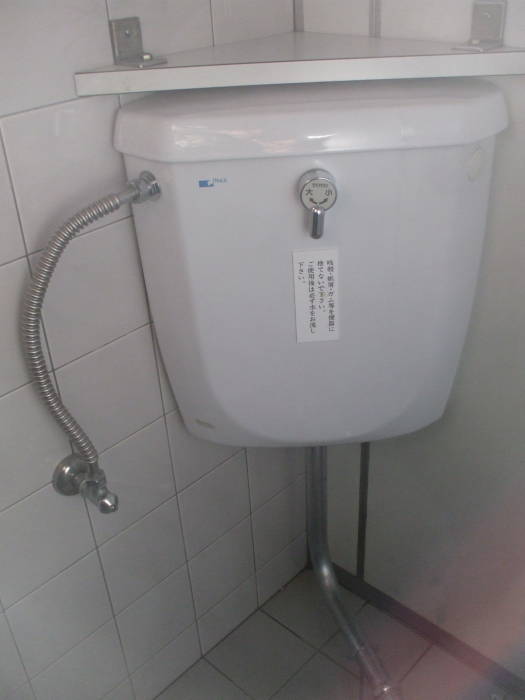
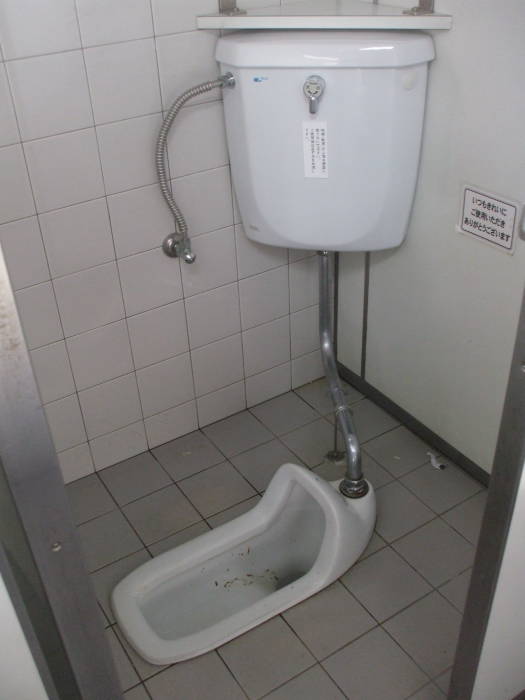
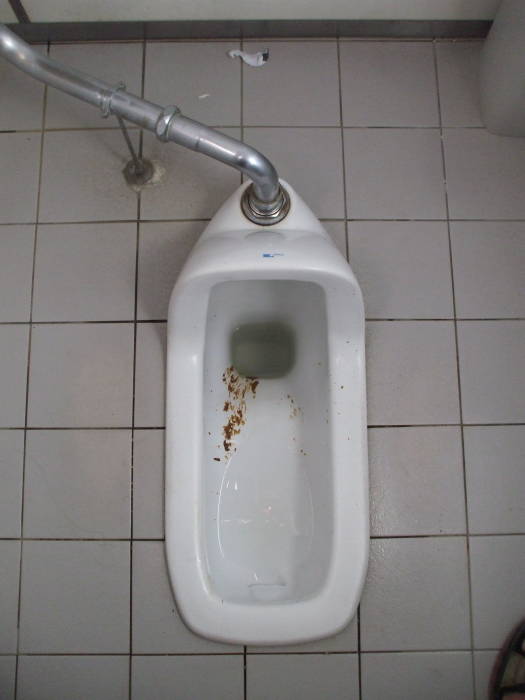
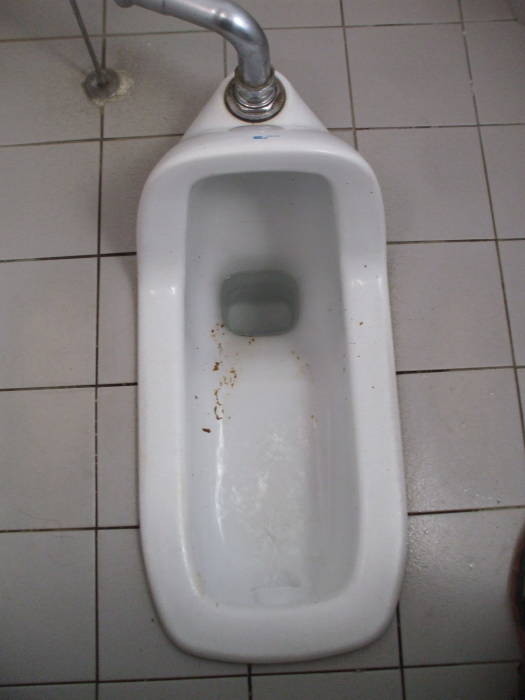
OK, that's a little cleaner after two big flushes.
Here's a clean one at the train station in Kamakura. The flushing stream enters at the rear and drains at the front.
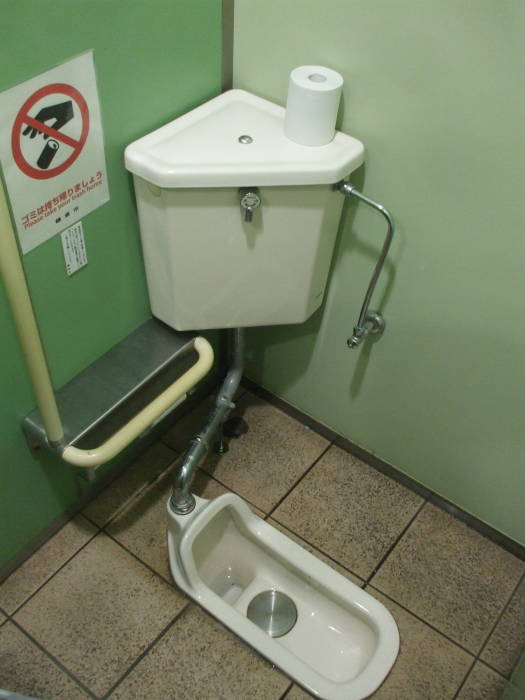
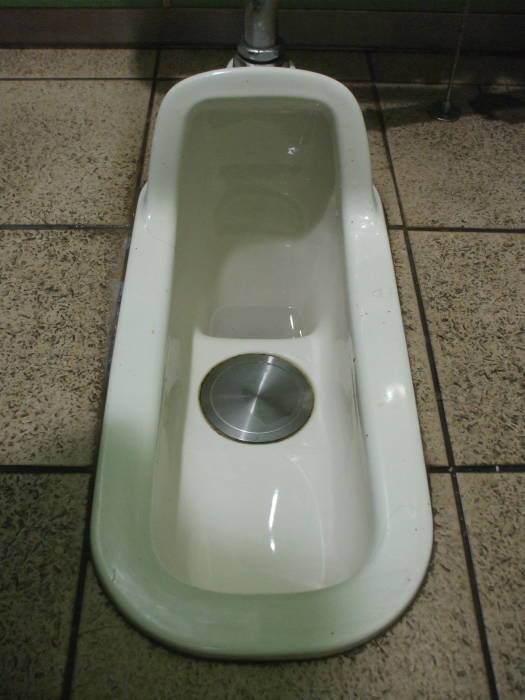
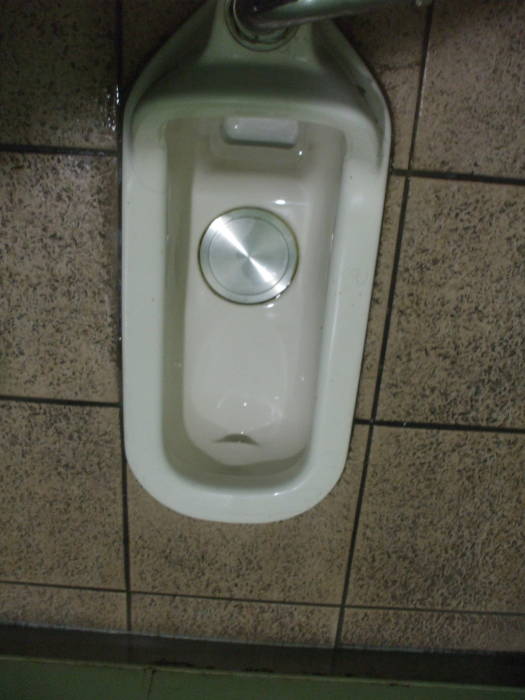
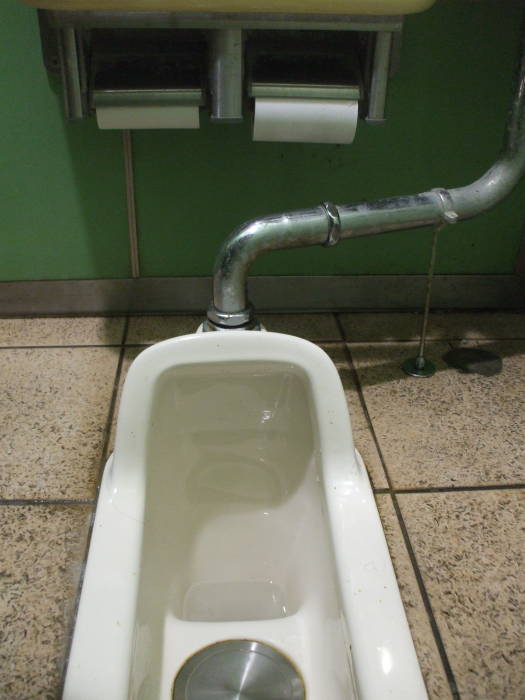
Front Drain or Back Drain?
The squat toilets shown above drain in the front, under the archway that you face while using them. Others flush from the front and drain toward the rear. Here's a rear-drain unit at Rinno-ji, a Buddhist temple in Nikko.
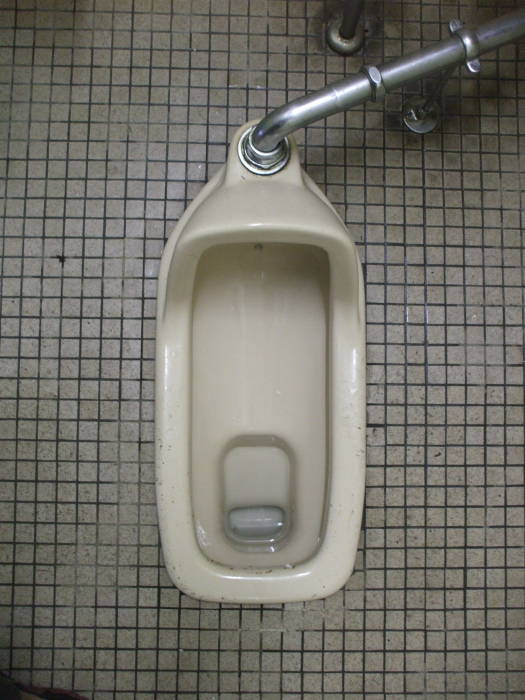
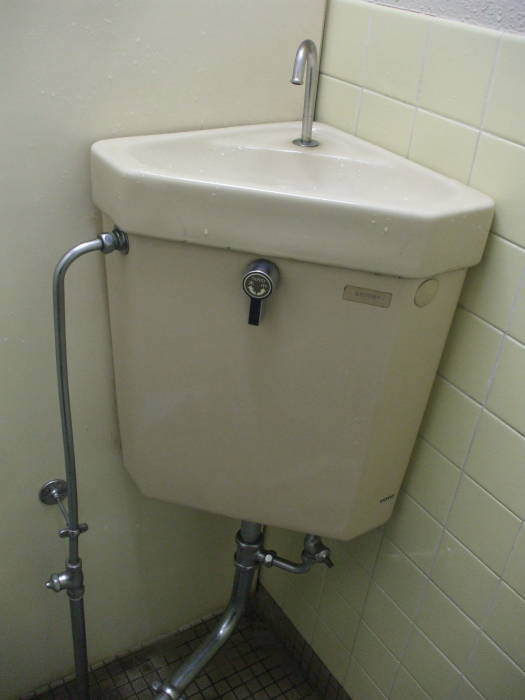
Tank Flush or Supply Line Pressure?
Some squat toilets flush directly off supply pipe pressure. The Kosho-ji temple in Kyōto, headquarters of the Shinshu Kosho sect of Buddhism, has a public toilet down a dark hall in a building next to the main temple.
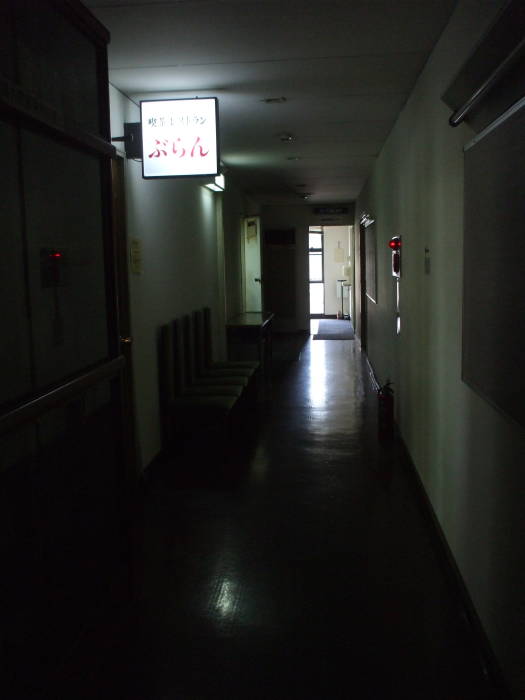
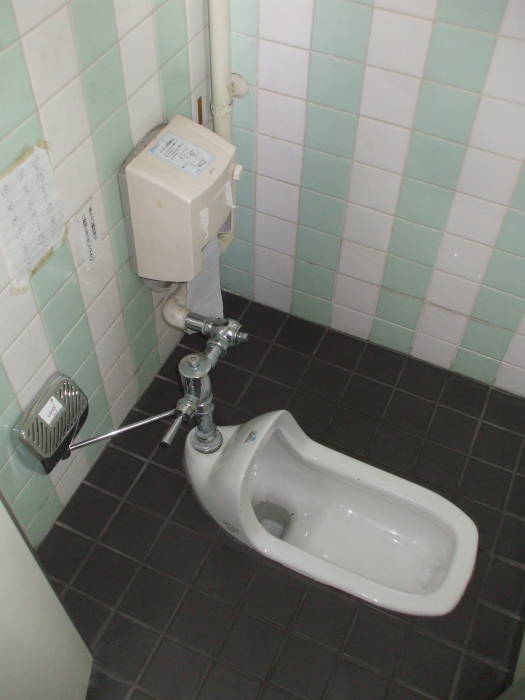
Or, this very simple one at Tōshōdai-ji, a temple of the Risshū sect of Buddhism near Nara.
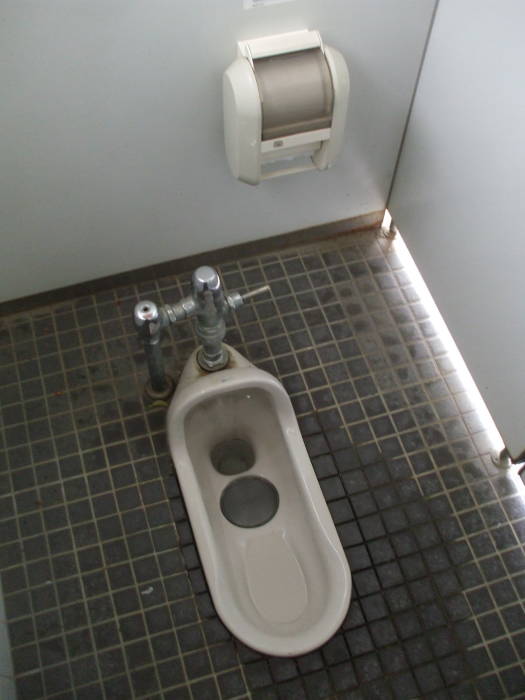
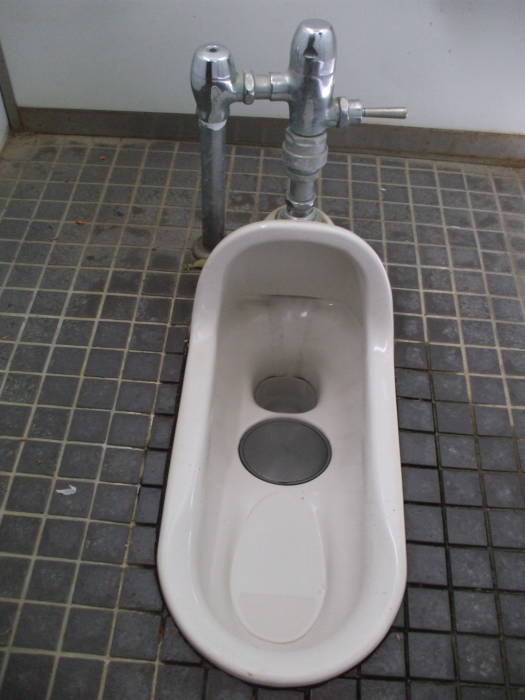
What About Handrails?
There are usually some handrails, although there is no standard configuration. Here is a useful looking set at the Tobu Railroad Station in Nikko.
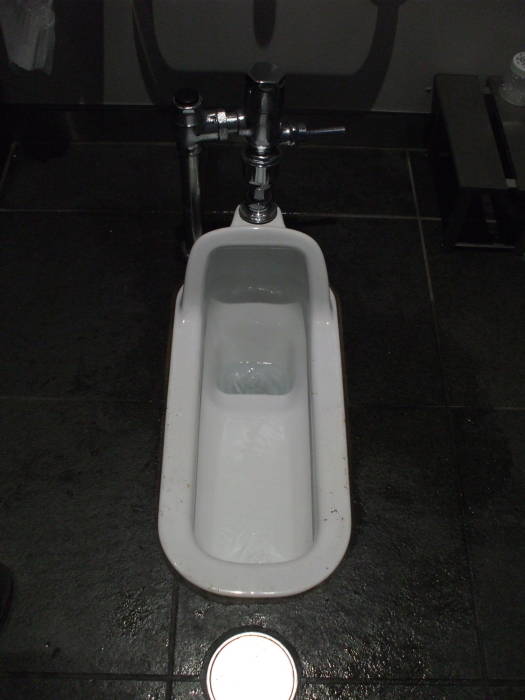
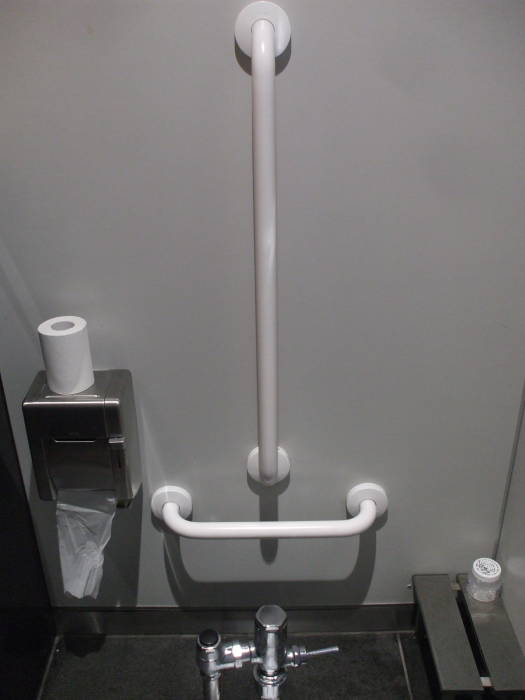
Other Squat Toilets
Here are some other squat toilet examples from various locations.
Hachiman-gū Shrine, Kamakura
This is the most important Shinto shrine in Kamakura. Until the forcible separation of Shinto and Buddhism at the Meiji Restoration of 1868, it had also been a Buddhist temple for almost 700 years.
A Hachiman-gū is a Shinto shrine dedicated to the kami or spririt Hachiman. He is a syncretic divinity, a combination of Shinto and Buddhist aspects. The popularity of Hachiman, the deity of warriors, and his role as the divine protector as Japan, the Japanese people, and the Imperial House, makes a Hachiman-gū the second most common type of Shinto shrine.
Peasants have worshipped Hachiman since ancient times, as he was also the god of agriculture and fishing.
Shinto identifies Hachiman with the Emperor Ōjin, son of the perhaps more legendary Empress Jingū. Ōjin is believed to have ruled from 270 to 310 CE. Jingū? Ah, maybe. By the 8th century CE the Buddhists came to consider Ōjin as Hachiman Daibosatsu or Hachiman the Great Bodhisattva.
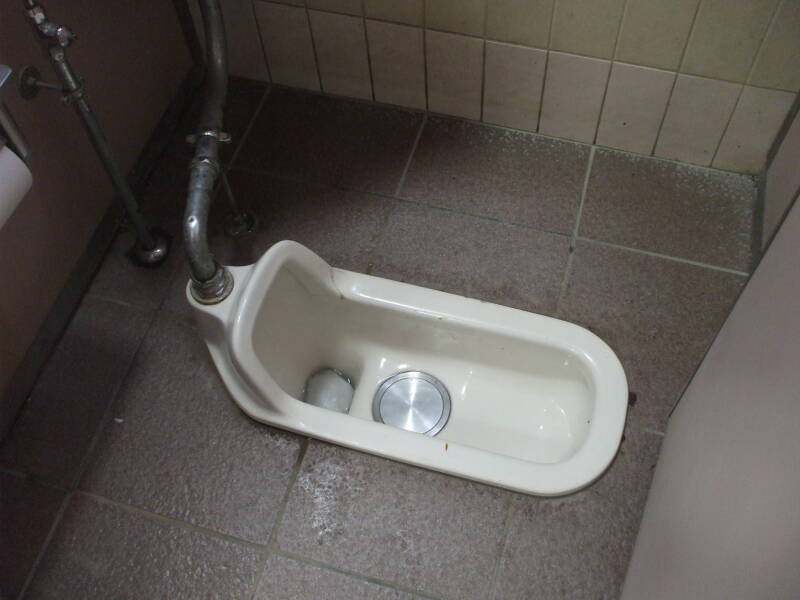
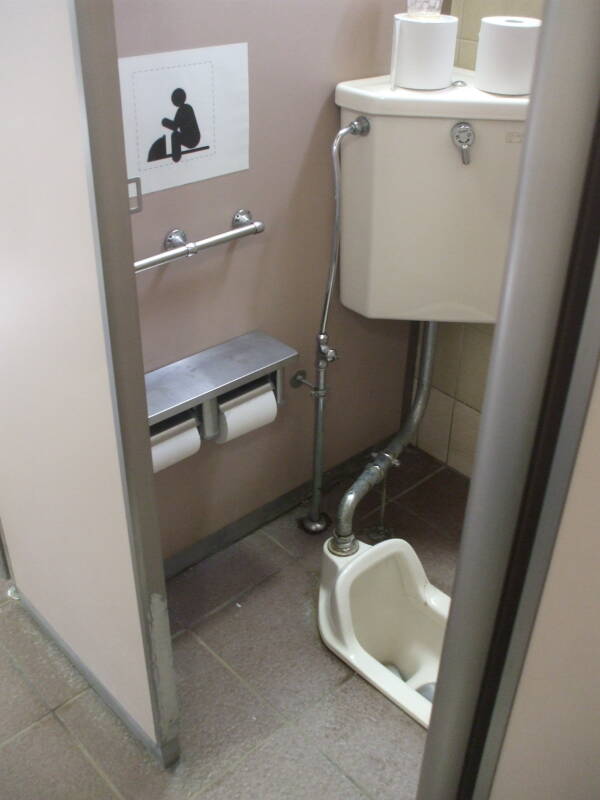
Look at this: there's plenty of toilet paper, hand rails, and a reminder about which direction to face. The walls and doors reach all the way from the floor to well overhead.
Ginkaku-ji, Kyōto
Ginkaku-ji is the Temple of the Silver Pavilion. Or officially, Jishō-ji, the Temple of Shining Mercy. It is one of the primary Zen Buddhist temples in Kyōto.
The Shōgun Ashikaga Yoshimasa built the pavilion as a retirement home. He arranged for it to be converted into a Zen Buddhist temple after his death.
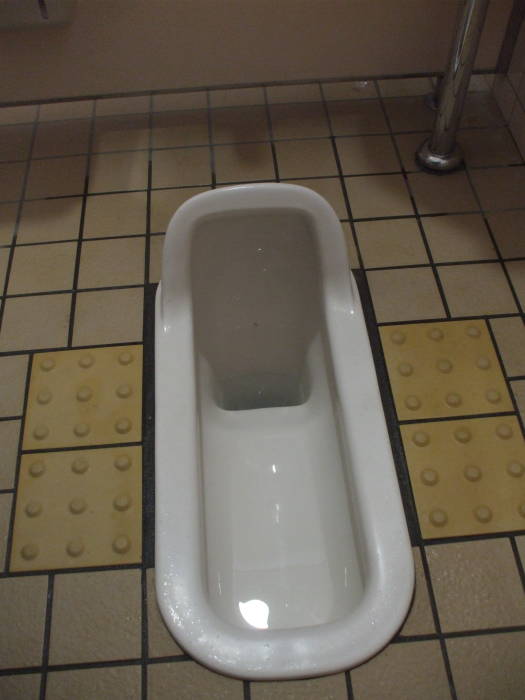
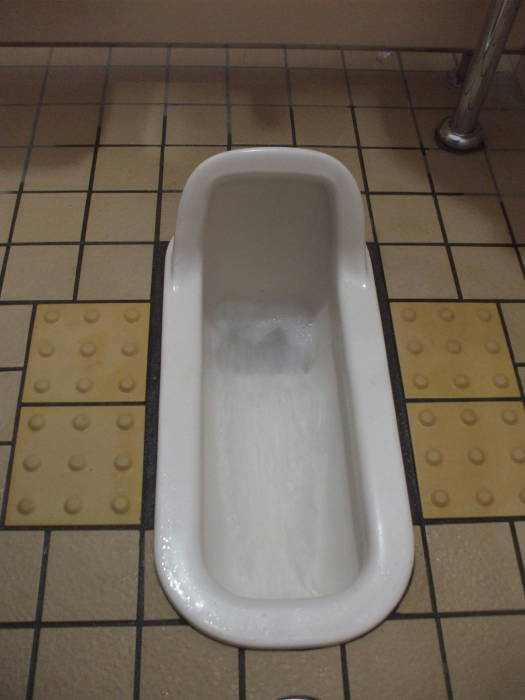
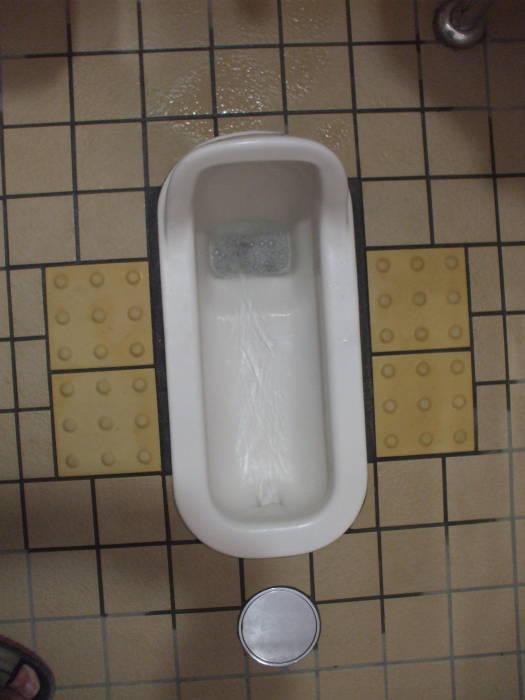
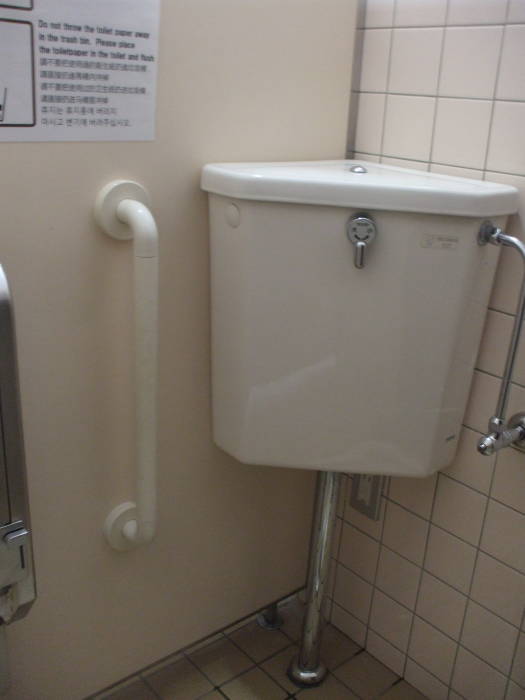
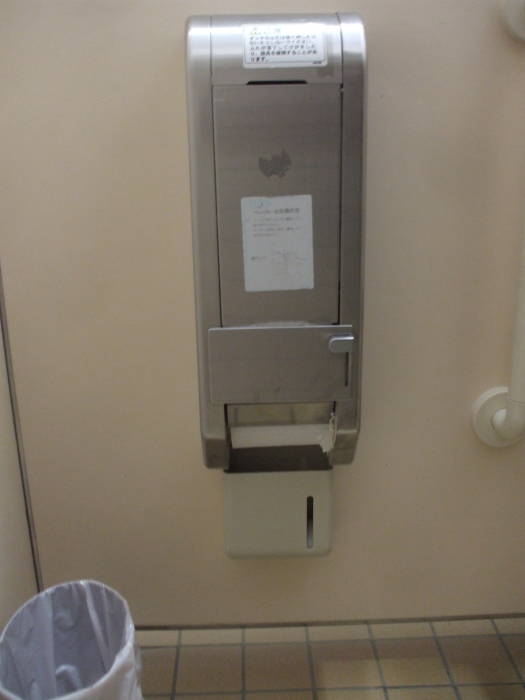
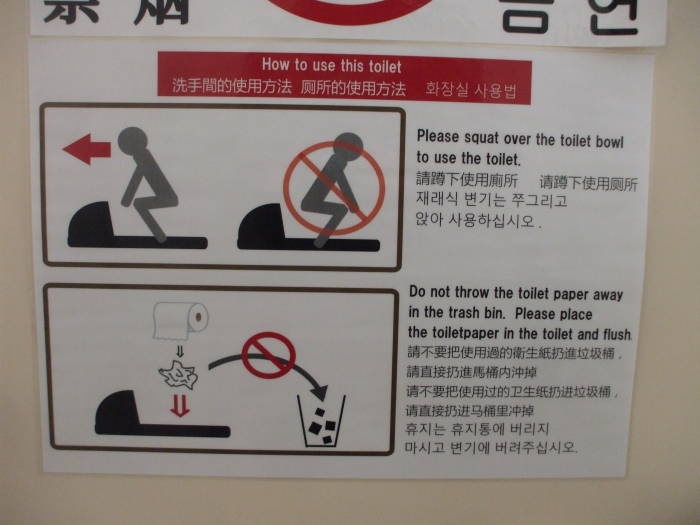
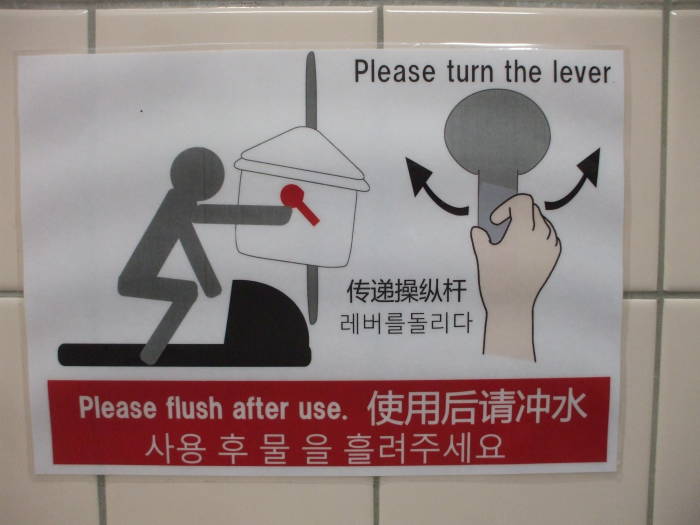
Higashi Hongan-ji, Kyōto
Higashi Hongan-ji, or the Eastern Temple of the Original Vow, is the Kyōto home of one of the two predominant sub-sects of Shin Buddhism. The temple and sub-sect were established in 1602. The Shōgun Tokugawa Ieyasu split the Shin sect in two to diminish its power. He had seized power and established a government at Edo, now called Tokyo. The Tokugawa shōgunate lasted from 1603 to 1868.
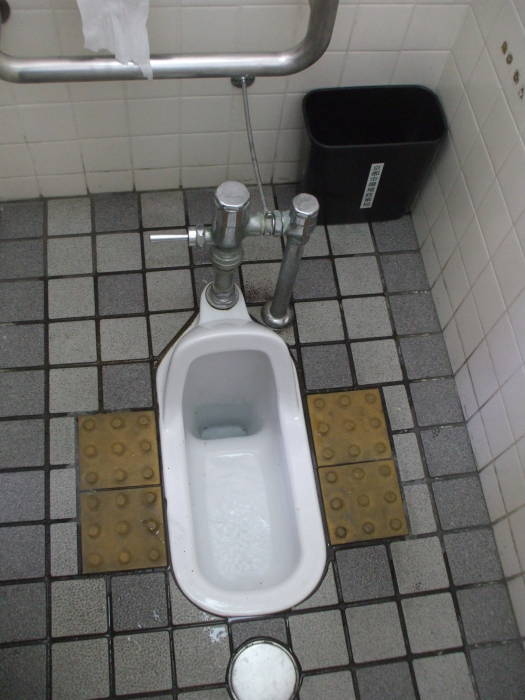
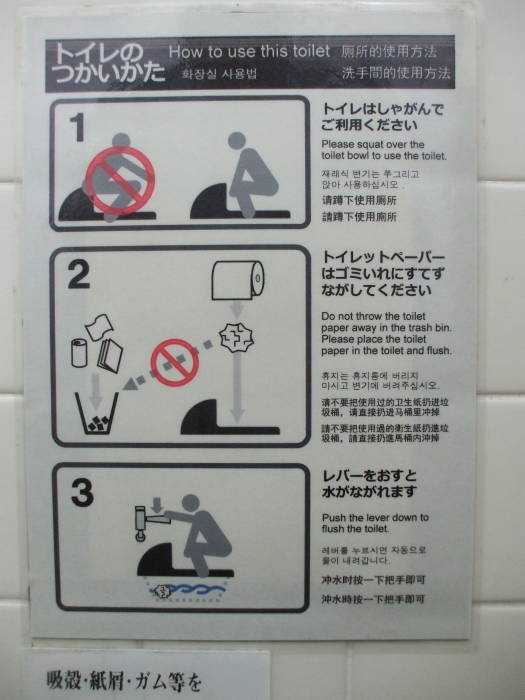
Nara
This standard front-drain squat toilet is at a pub in Nara.
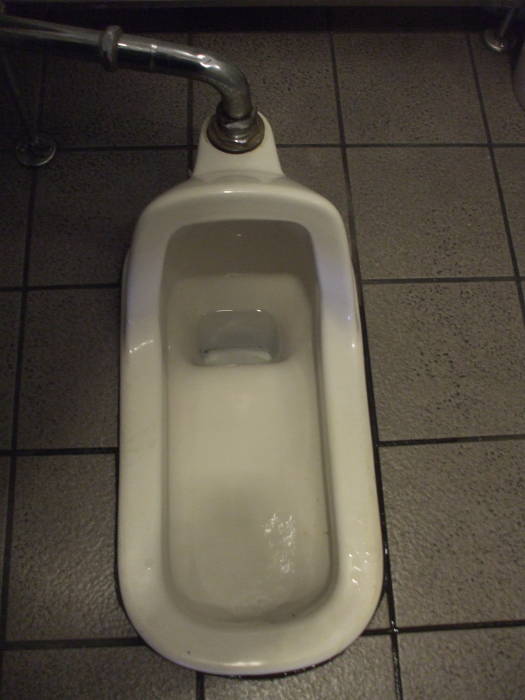
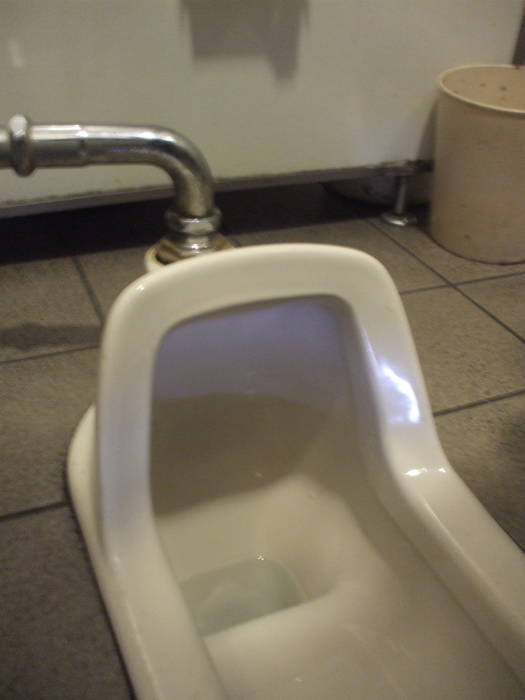
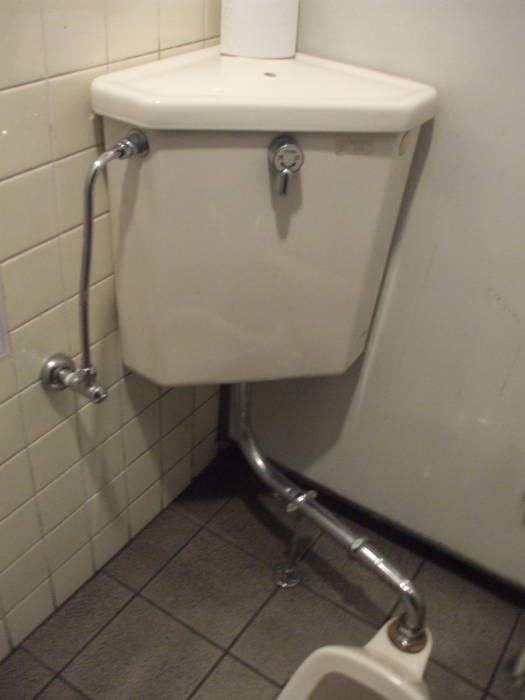
Squat Toilets are Simple
Here's a public toilet along the Takase Canal running parallel to the river in Kyōto.
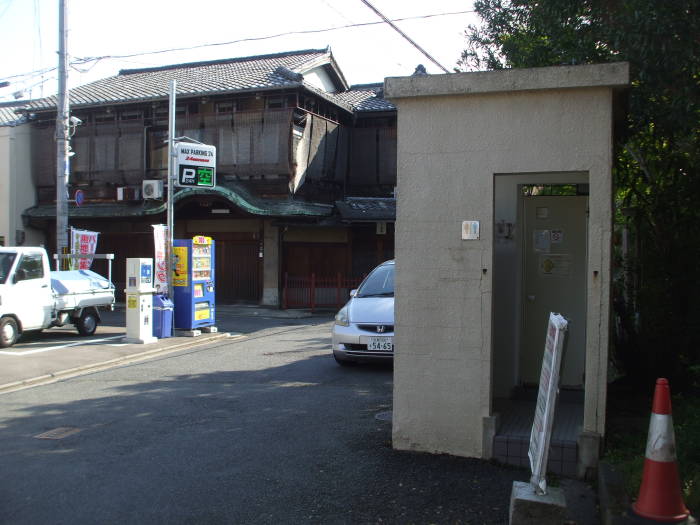
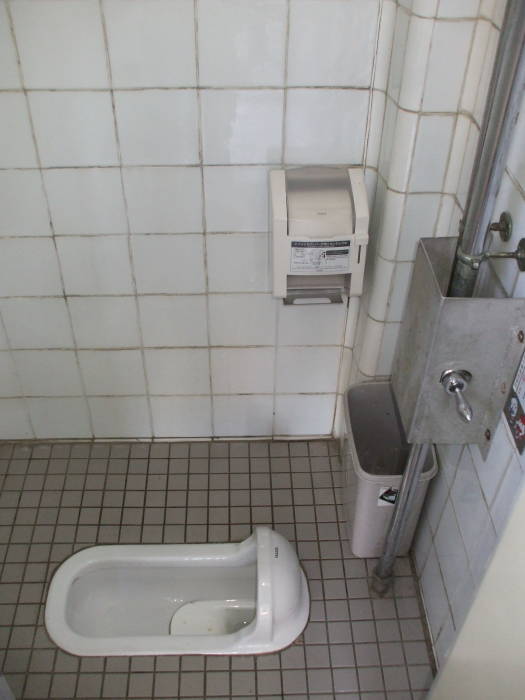
This design doesn't occupy much space. That's important in Japan, where space is very limited. The archipelago of Japan actually covers almost twice the area of Britain, 146,000 square miles versus 80,800. But most of Japan is a rugged volcanic mountain chain. Limited flat space is needed for farmland. So, small is good.
A squat toilet is simple, meaning that a town can afford to provide more of them.
Finally, it's easy to keep them clean, and the people doing the work can themselves stay cleaner. No need to put on gloves and manually sponge down a raised porcelain device. Clean it with a hose and a brush on a long handle, washing the entire tile-covered space as the water drains out through the toilet.
Toilets at the Imperial Palace
These aren't literally the Emperor's toilets, they aren't inside the palace grounds. These are public toilets and urinals in the park surrounding the palace.
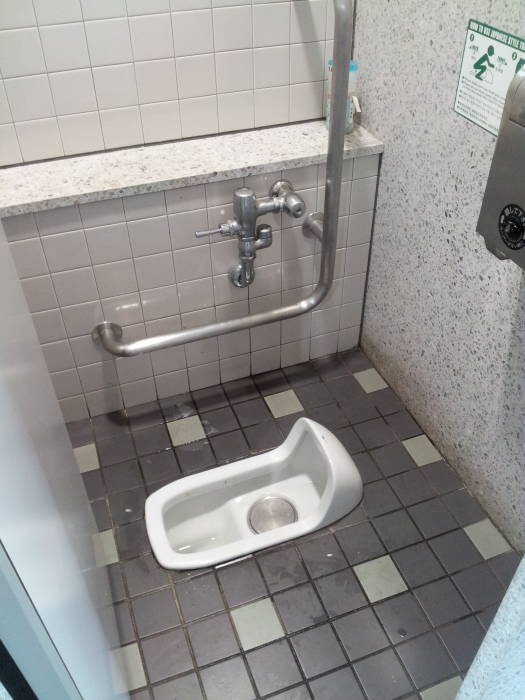
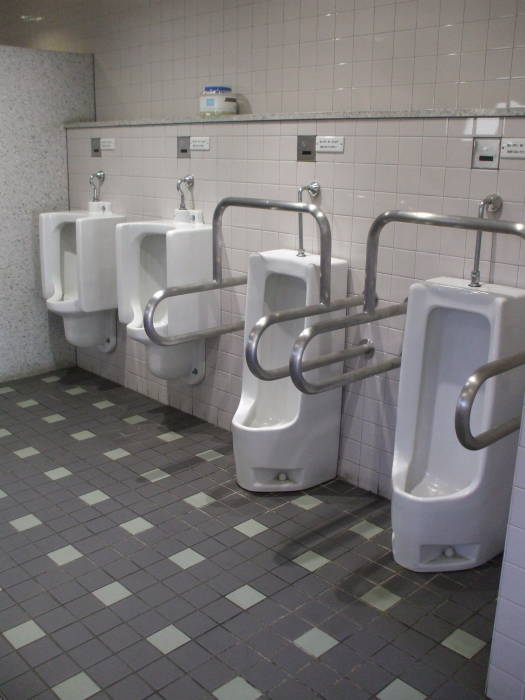
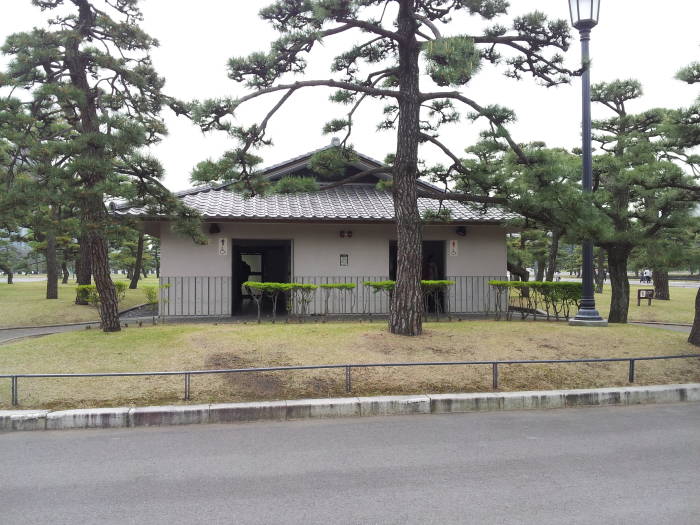
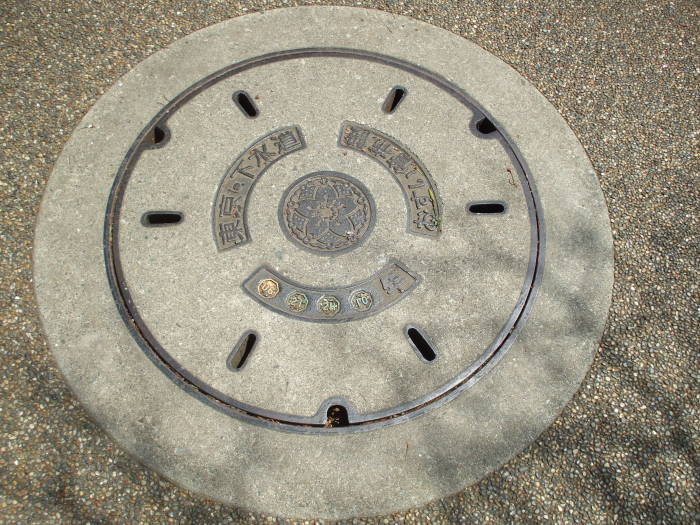
Are you interested in having your very own squat toilet in your home?
Check out my page on installing a squat toilet. It includes links to manufacturers where you can buy your own. Then it's a matter of getting it installed, or doing it yourself. Check out the details!